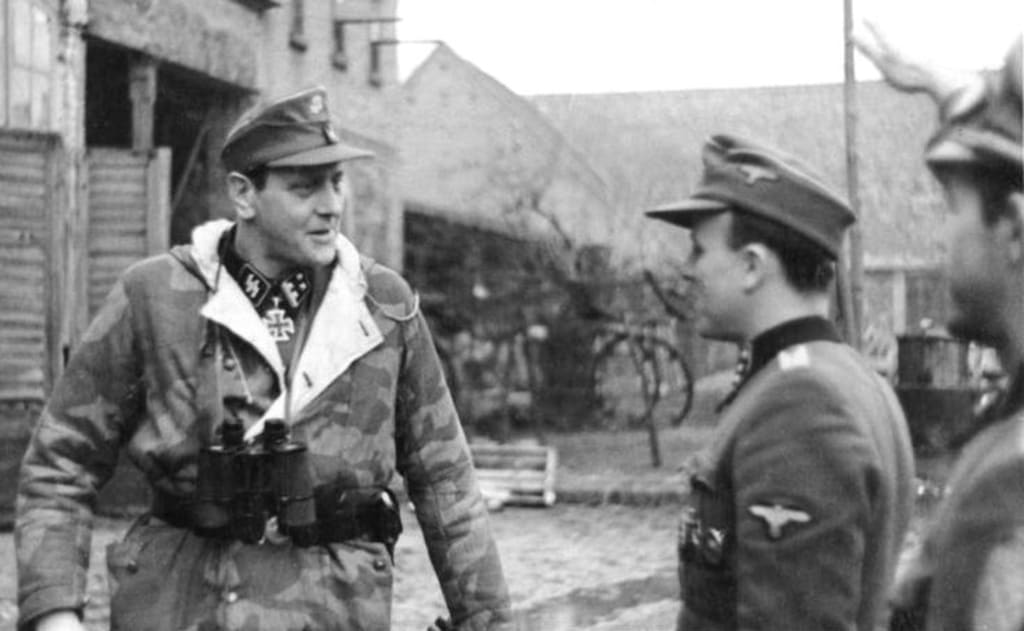Otto Skorzeny: 'The Most Dangerous Man in Europe
Dubbed the most dangerous man

Otto Skorzeny, often referred to as "The Most Dangerous Man in Europe," was a high-ranking officer in Nazi Germany's Waffen-SS during World War II. Known for his audacious and successful commando operations, Skorzeny's legacy is a mix of military brilliance, ruthless cunning, and post-war intrigue. His life, marked by extraordinary missions and controversial actions, has made him one of the most infamous figures of the 20th century.
Early Life and Military Career
Otto Skorzeny was born on June 12, 1908, in Vienna, Austria. He was raised in a middle-class family and pursued engineering studies at the Vienna University of Technology. Skorzeny's early life was relatively unremarkable until he joined the Austrian Nazi Party in the early 1930s, drawn by the ideology and the promise of restoring Germanic pride and power.
When Germany annexed Austria in 1938, Skorzeny quickly integrated into the German military structure. He initially served in the Luftwaffe but soon transferred to the Waffen-SS, where his leadership skills and tactical ingenuity became evident. By 1943, Skorzeny had risen to the rank of Sturmbannführer (Major) and was put in charge of special operations.
The Gran Sasso Raid
Skorzeny's most famous mission, and the one that earned him international notoriety, was the rescue of Italian dictator Benito Mussolini. In July 1943, Mussolini was deposed and imprisoned by his own government. Hitler, determined to rescue his ally, assigned the task to Skorzeny.
On September 12, 1943, Skorzeny led a daring glider assault on the Gran Sasso mountain in Italy, where Mussolini was held captive in a hotel. The operation was a high-risk endeavor, but Skorzeny's meticulous planning and fearless execution led to its success. The team landed their gliders near the hotel, took the guards by surprise, and freed Mussolini without a single shot being fired. Mussolini was flown to safety, and the mission significantly boosted Nazi morale while cementing Skorzeny's reputation as a master of special operations.
The Battle of the Bulge
Another notable operation led by Skorzeny was during the Battle of the Bulge in December 1944. Hitler ordered Skorzeny to lead Operation Greif, a covert mission aimed at creating chaos behind Allied lines. Skorzeny organized a unit of English-speaking German soldiers, disguised them in American uniforms, and sent them to sabotage communications and spread misinformation.
The operation caused significant confusion among the Allied forces, leading to stricter security measures and a temporary loss of trust among the troops. Although the overall impact of Operation Greif was limited, it showcased Skorzeny's ability to think outside conventional military tactics and exploit psychological warfare.
Post-War Intrigue
After Germany's defeat in 1945, Skorzeny was captured by Allied forces and imprisoned. He was tried at the Dachau Trials for war crimes but was acquitted due to the ambiguous nature of his operations and lack of concrete evidence. In 1948, Skorzeny escaped from an internment camp in a daring breakout, further enhancing his legendary status.
Skorzeny fled to Spain, where he was protected by the Franco regime. He became a prominent figure in the post-war underground network, helping former Nazis escape to South America via the "ratlines." He also established a successful engineering business and reportedly worked as a military advisor for several Middle Eastern countries, including Egypt.
One of the most controversial aspects of Skorzeny's post-war life was his alleged involvement with Israeli intelligence agency Mossad. Reports suggest that in the 1960s, Skorzeny was recruited by Mossad to assist in operations against former Nazis and Arab enemies, in exchange for immunity from prosecution. This surprising twist added another layer to Skorzeny's complex legacy.
Legacy and Controversy
Otto Skorzeny died of cancer on July 5, 1975, in Madrid, Spain. His legacy remains contentious, with views on his life and actions deeply divided. To some, Skorzeny was a brilliant military tactician and a fearless leader. His successful missions, especially the Gran Sasso raid, are studied in military academies worldwide for their audacity and execution.
However, Skorzeny's legacy is also marred by his association with the Nazi regime and the atrocities committed by the SS. His post-war activities, including aiding Nazi fugitives and potentially working for Mossad, paint a picture of a man who thrived on intrigue and conflict, regardless of the ideological sides involved.
Skorzeny's life story is a reminder of the complexities and moral ambiguities of war. His ability to operate effectively in both overt and covert missions, coupled with his survival and adaptation in the post-war world, make him a unique figure in modern history. The title "The Most Dangerous Man in Europe" reflects not just his military prowess but also the lasting impact of his actions on the world stage.
In studying Otto Skorzeny, one delves into a narrative that spans the extremes of human experience – from calculated heroism to ruthless opportunism. His life encapsulates the dualities of war, where lines between right and wrong blur, and survival often trumps morality.
About the Creator
Enjoyed the story? Support the Creator.
Subscribe for free to receive all their stories in your feed. You could also pledge your support or give them a one-off tip, letting them know you appreciate their work.






Comments
There are no comments for this story
Be the first to respond and start the conversation.